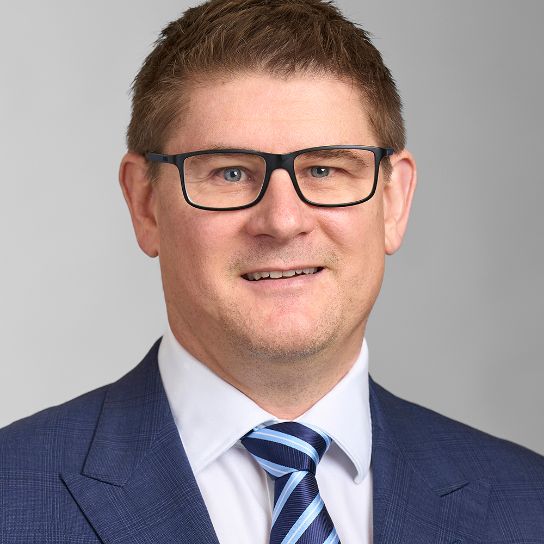In this series of short articles we look at the current trends affecting infrastructure investment in Australia. This article considers trend # 6 – Using technology to do more with less.
We are progressively seeing infrastructure owners look for ways to increase the profitability of their existing assets other than by extending or expanding the asset, or relying on demand growth. This includes using technology to:
- increase the capacity of existing assets;
- reduce the maintenance costs of assets; and/or
- create new sources of revenue from existing assets.
Increasing asset capacity
As demand for access to many types of infrastructure continues to increase, owners are seeking to respond by unlocking capacity within their existing assets. Sector-specific technology is central to this trend, revealing more efficient ways of delivering existing services.
We have seen a number of capacity extension projects in the toll roads sector, with road widening projects such as Melbourne’s CityLink Tullamarine and Sydney’s M4, and the development of better traffic management systems.
There are also several examples of this in the rail sector, including the use of driverless trains in the Pilbara, condition monitoring and signalling technology to allow trains to run faster and closer together.
Condition monitoring technology automates rollingstock inspection and assessment tasks as the trains are in use (as opposed to in a depot) enabling them to identify and prioritise maintenance activities. Aurizon is using ‘condition monitoring’ technology in the Queensland coal network.
Under the NSW Government’s ‘More Trains, More Services’ plan, new signalling technology will allow passenger trains to operate closer together, increasing the capacity of the rail network without the need for track duplication. The Australian Rail Track Corporation’s proposed Advanced Train Management System (currently under trial) has the same aim in the freight rail sector.
Reducing asset maintenance costs
Remotely piloted aircraft (drones) have the potential to change the way infrastructure owners conduct routine maintenance and inspection activities, offering both safety and efficiency improvements. Until recently, restrictive licensing conditions imposed by the Civil Aviation Safety Regulations have inhibited the use of this technology for commercial operations. However, in September 2016 the Civil Aviation Legislation Amendment (Part 101) Regulation came into effect, introducing the concept of an ‘excluded RPA’ class that does not require an operator’s licence or certificate.
Commercial operations of RPA in the very small weight class (100g < 2kg) fall within this excluded class, provided that the following conditions are met:
- only one RPA is operated at a time;
- the operations are in the visual line of sight of the operator;
- the operations do not take place over populated areas (including parks, beaches and sporting grounds);
- the operations are at or below 400ft above ground, and not within 30m of a person who is not a party to the operations;
- the operations do not take place in any prohibited or restricted areas, including within 5.5 km of a controlled aerodrome; and
- the Civil Aviation Safety Authority is notified 5 days before the first commercial operation.
While the amendments require line of site operations, the regulatory changes have allowed monitoring and inspection activities for inaccessible or high structures to be to undertaken in-house without a licence using small RPAs fitted with cameras or recording devices, offering potential cost savings and the avoidance of the safety risks associated with working at heights.
Creating new revenue streams
Creating new revenue streams from existing assets is not a new phenomenon – airports have been looking to develop parking, retail, hotel and office revenue streams from their precincts for years. However, infrastructure owners are now increasingly looking to the use of technology to open up further business opportunities.
A good example is in the electricity networks sector. Electricity network demand growth has levelled off with the introduction of rooftop solar and battery technologies, energy efficiency technologies and greater awareness of energy savings opportunities. To combat this lack of growth, utilities are looking at non-regulated revenue streams, including the use of new technology or enhancing existing technology to create new revenue streams from existing assets. An example of this is the use of AMI (or advanced metering infrastructure). In short, AMI is an integrated system of smart meters, communication networks and data management systems that enables two way communication between a utility and its customers. In recent times electricity utilities across Australia have invested heavily in AMI. Some of these electricity utilities are looking into ways to leverage their AMI network (as well as their expertise in managing AMI) to offer a range of smart, multi-utility metering solutions across electricity, gas and water, as well as to owners of embedded networks - such as retirement villages.
Legal issues of deploying technology
Asset owners looking to deploy technology to ‘sweat’ their existing assets must have regard of the legal implications of doing so. Whether deploying technology to unlock asset capacity, reduce asset maintenance costs or open up new revenue streams, the following should be considered:
- if the asset is regulated, does the current regulatory environment accommodate the planned deployment of the technology? Regulation often lags technology;
- are there any competition issues associated with the deployment of the technology? For example, if the deployment of technology requires customers to enter into contracts with third parties, this may amount to third line forcing under competition laws;
- is the technology subject to specific legislative/regulatory constraints? For example, the use of drone technology or autonomous vehicles; and
- are there any third party restrictions associated with the deployment of the technology? For example, in respect of any licenced technology, does the licence extend to using the technology to service third parties?
Key contacts
Legal Notice
The contents of this publication are for reference purposes only and may not be current as at the date of accessing this publication. They do not constitute legal advice and should not be relied upon as such. Specific legal advice about your specific circumstances should always be sought separately before taking any action based on this publication.
© Herbert Smith Freehills 2024


